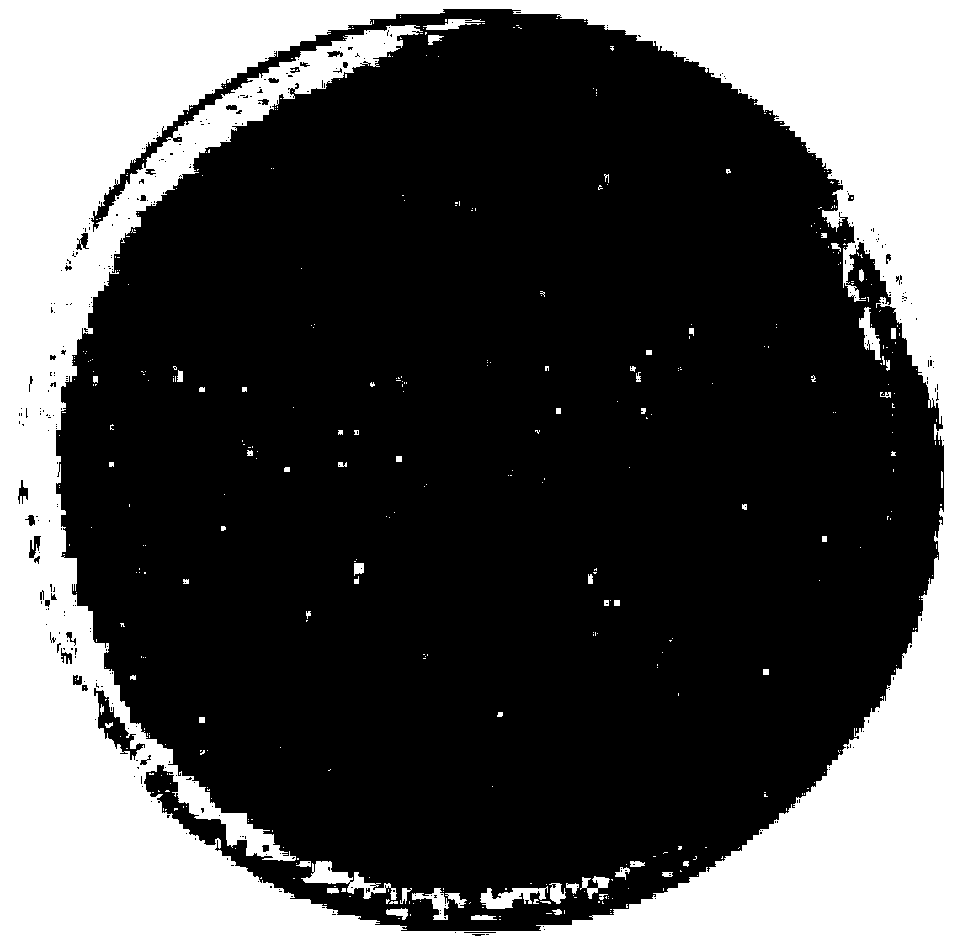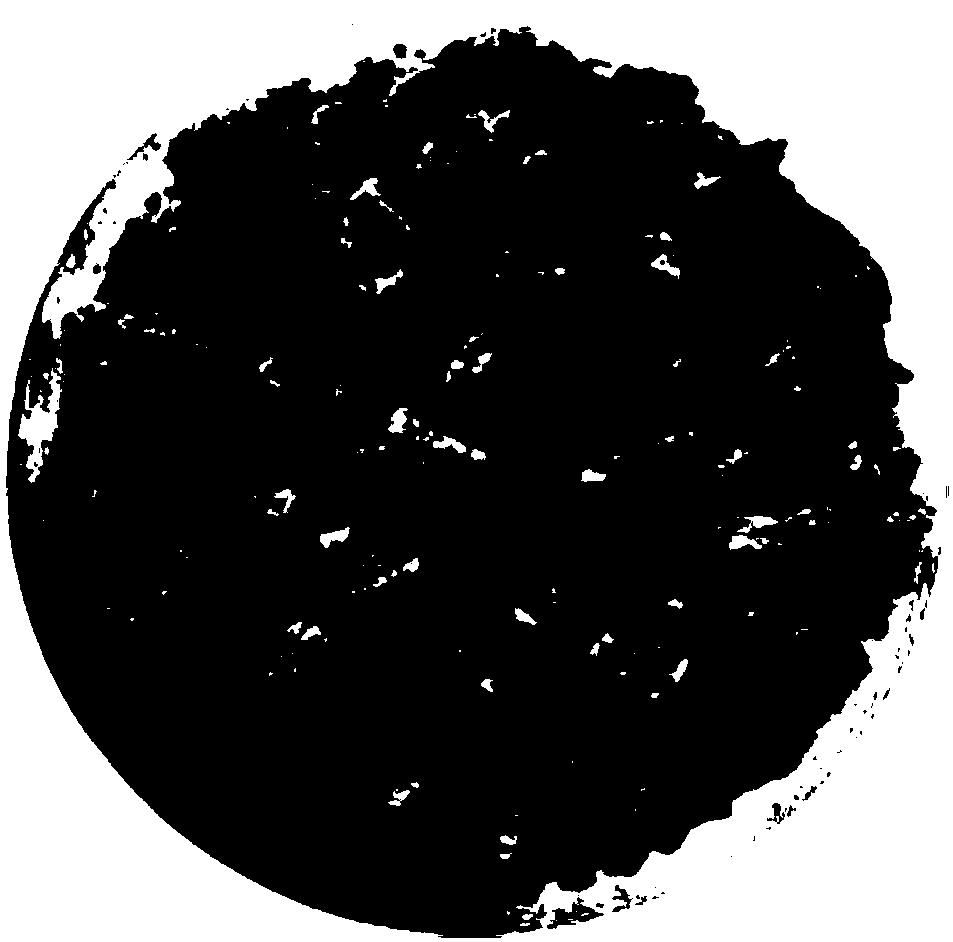Method for dehydrating and drying potato residues
A potato dregs and drying technology, applied in the fields of bacteria, food science, food processing, etc. used in food preparation, can solve the problems of long processing cycle, easy spoilage, low dehydration efficiency, etc., and achieve low-cost dehydration and drying, inhibiting The effect of harmful bacteria growth and enrichment of nutritional value
- Summary
- Abstract
- Description
- Claims
- Application Information
AI Technical Summary
Problems solved by technology
Method used
Image
Examples
Embodiment 1
[0053] Embodiment 1: dual bacterial fermentation
[0054] Specific steps are as follows:
[0055] (1) Bacillus subtilis was inoculated into a 250mL Erlenmeyer flask equipped with 100mL nutrient broth medium, and the temperature was 37°C, and the rotation speed was 200rpm, and aerobic culture was carried out for 36h to obtain the Bacillus subtilis bacterium liquid;
[0056] (2) Inoculate Lactobacillus plantarum CCTCC M 2017138 into a 250mL Erlenmeyer flask containing 100mL MRS medium, and culture it aerobically at a temperature of 37°C and a rotation speed of 200rpm for 14h to obtain a Lactobacillus plantarum liquid;
[0057] (3) In the fresh potato residue, the concentration of the inoculum solution was 1.5×10 according to the inoculation amount of 2mL / 100g (bacteria liquid volume / potato residue mass). 9 CFU / mL, pectinase activity of 23.30U / mL of Bacillus subtilis bacteria liquid, mix evenly, pave and seal with a sealed bag or a closed fermentation tank, and anaerobically fer...
Embodiment 2
[0060] Embodiment 2: dual bacterial fermentation
[0061] Specific steps are as follows:
[0062] (1) Inoculate Bacillus megaterium into a 250mL Erlenmeyer flask equipped with 100mL of nutrient broth medium, and culture it aerobically at a temperature of 37°C and a rotation speed of 200rpm for 12h to obtain a Bacillus megaterium bacterium liquid;
[0063] (2) Inoculate Lactobacillus plantarum CCTCC M 2017138 into a 250mL Erlenmeyer flask containing 100mL MRS medium, and culture it aerobically at a temperature of 37°C and a rotation speed of 200rpm for 14h to obtain a Lactobacillus plantarum liquid;
[0064] (3) In the fresh potato residue, the concentration of the inoculum solution is 2.1×10 9 CFU / mL, pectinase activity of 21.27U / mL Bacillus megaterium bacteria liquid, mix evenly, pave and seal with a sealed bag or an airtight fermentation tank, anaerobic fermentation at 37°C for 36h, to obtain a fermentation sample ;
[0065] (4) In the fermentation sample, the concentrati...
Embodiment 3
[0067] Embodiment 3: dual bacterial fermentation
[0068] Specific steps are as follows:
[0069] (1) Inoculate Bacillus licheniformis into a 250mL Erlenmeyer flask equipped with 100mL nutrient broth medium, and culture it aerobically for 120h at a temperature of 37°C and a rotating speed of 200rpm to obtain a Bacillus licheniformis bacterium liquid;
[0070] (2) Inoculate Lactobacillus plantarum CGMCC No: 5494 into a 250mL Erlenmeyer flask containing 100mL of MRS medium, and culture it aerobically at a temperature of 37°C and a rotation speed of 200rpm for 14 hours to obtain a Lactobacillus plantarum liquid;
[0071] (3) In the fresh potato residue, the concentration of the inoculum solution is 2.3×10 9 CFU / mL, pectinase activity of 22.25U / mL Bacillus licheniformis bacteria liquid, mix evenly, pave and seal with a sealed bag or an airtight fermentation tank, and anaerobically ferment at 37°C for 120h to obtain a fermentation sample ;
[0072] (4) In the fermentation sample...
PUM
| Property | Measurement | Unit |
|---|---|---|
| Viable count | aaaaa | aaaaa |
Abstract
Description
Claims
Application Information
 Login to View More
Login to View More - R&D
- Intellectual Property
- Life Sciences
- Materials
- Tech Scout
- Unparalleled Data Quality
- Higher Quality Content
- 60% Fewer Hallucinations
Browse by: Latest US Patents, China's latest patents, Technical Efficacy Thesaurus, Application Domain, Technology Topic, Popular Technical Reports.
© 2025 PatSnap. All rights reserved.Legal|Privacy policy|Modern Slavery Act Transparency Statement|Sitemap|About US| Contact US: help@patsnap.com


